#mutant hunt 1987
Explore tagged Tumblr posts
Photo






Rick Gianasi in Mutant Hunt (1987)
#rick gianasi#rickgianasiedit#mutant hunt#mutant hunt 1987#movie#film#filmedit#80s#80sedit#actor#menedit#hairy chest#80s movies#gifs#mine#*
443 notes
·
View notes
Text

Mutant Hunt (1987) 🍕🍕🍕
Found some good shit.

#mutant hunt#1987#direct to video#vhs#80s#trash#80s nostalgia#80s trash#tim kincaid#taunie vrenon#rick gianasi
4 notes
·
View notes
Text








Ideal 80s NYC grime and jumpsuits in Mutant Hunt (1987)
1 note
·
View note
Text

Mutant Hunt (Tim Kincaid, 1987)
60 notes
·
View notes
Note
Do you ever think about a turtles forever 2 storyline cuz this bs is driving me crazy
And I want your thoughts?
Basically if 1987,2003,2012 and rise all met how do you think that would go
Soo, personally, I don't really have an complete answer.
Ron Corcillo once said that if they were going to do a Turtles Forever 2, or something along those lines, that it would probably be Mikey's portals that brings everyone together.
But as for how the meeting would go, I was reminded of a picture I'd seen a while ago, so I hunted it down:

This is the thumbnail from a Jaxblade video, "Which Teenage Mutant Ninja Turtles Cartoon Was Best? (1987 vs 2003 vs 2012 vs Rise)" The artist is Kazuva Art aka Valenrepetto I hope that helps! Thanks for the ask 💜
#answered asks#fanart not mine#rottmnt#tmnt#teenage mutant ninja turtles#rise of the teenage mutant ninja turtles#rise of the tmnt#tmnt2018#tmnt 2k18#tmnt 2018#save rottmnt#unpause rottmnt#unpause rise of the tmnt#save rise of the tmnt#save rise of the teenage mutant ninja turtles
146 notes
·
View notes
Text
MojoWorld
A few of our prompts this year make specific reference to the comics. We know that not everyone has read the comics (there are a lot of X-Men comics out there) and we don’t want anyone to feel left out.
So, without further ado… Mojo.

Mojo is a character all about television, viewing figures, and especially consuming media in a mindless fashion. He will do whatever it takes to get top ratings. Which, often means excessive violence and abducting the X-Men to participate unwillingly in his programs. While the message can be quite ham-fisted at times, the stories can offer quite a variety of fun possibilities where we might find our favorite couple.

He is a petty tyrant. He rules his world with an iron grasp. The actors are basically slaves (you can find arcs about the slave revolts in the early issues of adjectiveless X-Men from the 1990s). Longshot was one of these actors who escaped and joined the X-Men. You’ll note his three fingers and a thumb, hollow bones, and a spine, which are characteristics of the actors in this world.

The ruling class of MojoWorld (including Mojo) are known as the ‘spineless ones.’ As the name implies, they have no spines. They lounge in this spider-legged chairs which support their corpulent bodies. At times he is portrayed with his eyes being held/forced open, so they can continue to consume media 24/7. Honestly, there is nothing subtle about the metaphors here.

Mojo has appeared not only in the comics, but has also appeared in animation. Episodes featuring him have aired in X-Men the Animated series, X-Men ‘97, and Wolverine and the X-Men. For the most part, he’s more of a general X-Men villain and will abduct various team member as is fitting for the plots of his productions. He has a wheel of genres, had created the X-Babies (as an X-Baby, Rogue is sometimes called Sugah), and had no compunctions about abducting and brainwashing people. His main underlings are Major Domo and Spiral.

X-Babies



(Various stories Mojo has considered producing.)

(Wheel of Genre, House of Ideas, The Wheel of Angsty Mutant Pain and Suffering)
To learn more about Mojo (or to find creative inspiration), here is a non-comprehensive list of Mojo-stories. (The ones featuring Rogue and Gambit are bolded)
Reading List:
Mr. and Mrs. X (2019) - issues 7-10
X-Men (1992) - issues 10-11
X-Men (1995) 46-47 (X-Babies)
X-Men Annual #12 (1987)
Excalibur: Mojo Mayhem (1989) (X-Babies)
X-Men Gold and X-Men Blue (2017) issues 13-15 of both - Mojo Worldwide arc/crossover
Watch:
XtAS season 3, episode 11 - Mojoverse
XtAS season 3, episode 10 - Longshot
X-Men ‘97 - season 1, episode 4 - Motendo
WatX - season 1, season 15 - Hunting Grounds
#rogue/gambitweek2024#mojo#Mojoworld#rogue#gambit#romy#anna marie lebeau#remy lebeau#otp: home and harbor#otp: mon coeur
23 notes
·
View notes
Text
X-Men - Earth 18104
Time-line of the X-Men for my original universe Earth-18104. The events are based in different medias, like the movies, comics and series. Also, I included some of my OCs, as I literally just made this universe for them (and to change stuff I don't like I the stories).
There's a longer list of events of my universe too, including stuff about the Avengers, but I focus more in the X-Men.
This lists goes from 1971 (barely) to 2000, the first part of the Age of Heroes.
List of Events
1971 -
Irene Adler has a vision about the future of mutants. She and Raven Darkhölme start to "prepare for the war", looking for more mutants. They convince Jason Wyngarde to join them.
Erik Lensherr continues to hunt down Sebastian Shaw.
1972 -
The "First Class" of X-Men is founded by Charles Xavier and Moira MacTaggert after they discovered that Sebastian Shaw and his Hellfire Club planned to start a nuclear war against the humans.
They join Darkhölme, Adler and Wyngarde, and then meet Lensherr. They receive help of Fred Duncan and Gabrielle Haller to form the team to fight Shaw.
The first members are Armando Muñoz (Darwin), Vienna Adamsen (Petra), Suzanne Chan (Sway) and Sean Cassidy (Banshee).
The Hellfire Club members are: Amélia Voght, Janos Quested and Adriana Soria.
Most of things are just like the movie, but with different characters.
Except Darwin never dies and Shaw is killed by Erik and later his body is taken by Lady Sinister. Adriana Soria is taken by CIA and Janos Quested escapes.
After the Battle of Cuba, Xavier becomes paralyzed and lives with Gabrielle Haller in Graymalkin Lane; Erik leaves the X-Men with Voght and Wyngarde; Irene and Adler leave too, but in separate ways; Moira goes to Muir Island with the recruits.
1975 -
Sean Cassidy marries his girlfriend.
Weapon Plus erases the memories of the Team X.
1976 -
Charles Xavier marries Gabrielle Haller.
Team X escapes the Weapon X facility. Logan loses his memories and lives in the mountains with James and Heather Hudson.
1979 -
David Haller, son of Xavier and Haller, is born.
Just months after his son's birth, Charles fights the Shadow King, who loses his body and puts his own conscious on David's mind, planning on taking revenge on Xavier in the future.
Afraid of what could happened if she stayed with Xavier, Gabrielle Haller leaves Graymalking Lane and takes her son with her.
1980 -
Pietro and Wanda Maximoff (12) activate their mutations for the first time.
1985 -
Jean Grey (10) manifests her powers for the first time. Xavier takes her to Graymalkin Lane to teach her to control her mutation.
Twenty years after the First Class, with new super heroes showing themselves to the public, Xavier decides to form a new team of X-Men.
1987 -
Bobby Drake (10) manifest his powers for the first time. His parents ask him to keep himself in secret, but Bobby starts to train his powers, wanting to be a super hero.
1988 -
Scott (12), Alex (10) and Gabriel Summers (6) survive a plane crash during a trip with their family.
Scott enters a coma, while his little brothers are taken to different forster homes. Xavier visits Scott with Moira and decides to come back to him after Scott wakes up.
AGE OF HEROES
1989 -
(June)
The Fantastic Four debut as the first super hero team.
(October)
Scott (13) wakes up from his coma after a year, waking his powers by accident. Xavier gives him a Ruby-Quartz visor and invites him to join his new team of X-Men.
Bobby Drake (12) is on a date when he shows his powers in public for the first time. After the town turns against him, because of the hate against super humans increasing, Bobby is save by Scott and goes to Graymalkin Lane.
(November)
Warren Worthington's wing grow and hes unable to hide his mutation anymore. Scott and Bobby go after him and invite him to join the X-Men. Hesitant, Warren (14) accepts.
Later, Charles introduces Jean Grey (14) to them.
1990 -
(May)
The Avengers debut as a super hero team during the Battle of New York.
(April)
During a rugby game, Henry McCoy (16) witnessed a pair of masked thugs trying to rob the ticket booth, and used his mutant abilities to stop them.
Henry participated a special program for gifted young people, founded by Tony Stark. There he met Moira MacTaggert, who took him to Charles and Henry, reluctantly, accept to join the team.
Now with the second lineup of X-Men complete, Xavier began training his new students to hone their powers in his Danger Room specially built by him and the team's old lineup.
1991 -
Wanda and Pietro Maximoff (23) decided to go to America to look for their biological father.
Wolverine left Canada and went to Japan. There, he met Kobayashi Amiko and adopted her as his daughter.
1992
The second class of X-Men graduated in their training: Iceman (14), Angel (17), Beast (18), Cyclops (16) and Marvel Gil (17).
Now calling himself Professor X, Charles Xavier (55) was ready to reveal the new X-Men to the world.
• Meanwhile, Magneto (59) has made his first move against humanity, taking control of a military base in Cape Citadel to launch his missiles at human targets. He was unexpectedly confronted by the X-Men and escaped before being defeated.
Due to his exemplary work on the field, Xavier selected Scott Summers to serve as the team's field leader.
Later they fought the mutant called Vanisher.
Xavier located Frederick Dukes (17), and sent the X-Men to recruit him.
Blob was uninterested in joining them and later attacked the school, but was defeated by X-Men soon.
Gabriel Summers (10) was raised in a foster family, until he decided to run away from his grandparents' house one night, going in search of Scott and Alex.
After getting lost, he was found by a criminal called Jack Diamonds, who took advantaged of his new powers. Gabriel later was saved by the first X-Men (Petra, Darwin, Sway) and taken to Muir Island, where he trained to be a X-Men and choose the name Kid Vulcan.
Magneto founded the Brotherhood of Evil Mutants, recruiting Jason Wyngarde, Amélia Voght, Mortimer Toybnee (14), Astra (20), Blob, Pietro and Wanda Maximoff (24).
They fought the X-Men briefly and then later where defeated.
The X-Men and the Fantastic Four fought the Puppet Master.
The X-Men where attacked by Calvin Rankin, Mimic.
Juggernaut attacked Graymalkin Lane and was defeated by the X-Men, put in a coma by Xavier.
1993 -
James Madrox (14) lost control of hid powers and was found by Moira MacTaggert, who took him to Muir Island, where he joined her X-Men with the codename of Multiple Man.
The X-Men graduated and soon fought Unus, the Untouchable.
Wanda and Pietro Maximoff (25) left the Brotherhood and joined the Avengers.
While living a pacific life in Paris, Gabrielle Haller's husband was killed. During the accident, David Haller (14) manifested his powers.
1994 -
Start of the Arc Z'Nox.
The X-Men find out Scott (18) has a brother. They meet Alex Summers (16) and he joins the team as Havok.
1995 -
(Mesmero and Krakoa)
Bobby (17) and Alex meet Lorna Dane (20). Soon they're kidnapped by Mesmero, who reveled that Lorna was Magneto's daughter.
Mesmero took control of Krakoa, the living mutant island, who once was home for the first mutants of the world. Mesmero and the X-Men discovered a secret nation of mutants that once lived in Krakoa (once known as Okkara).
These mutants were known as Enriched and they punished Mesmero for trying to steal their secrets and hurt Krakoa, who was asked to keep Mesmero trapped in a cell in the insides of the island.
The Enriched asked the X-Men to never tell about their secret nation, Khado, or about them, and the young mutants agreed.
Lorna Dane joined the X-Men as Polaris.
Hank McCoy left the X-Men to work at Brand Corporation.
(Among us stalk the Sentinels)
Believing that the mutant race was a threat to human society, scientist Bolivar Trask created the Sentinels.
To ensure the safety of mutants, Xavier began looking for new members for the X-Men.
The first of these would be his old Banshee friend, Sean Cassidy (43).
He also went after Sabretooth, who turned down his offer because he didn't care about the war between mutants and humans.
Jean (20), Scott (19) and Hank (21) met the mutant Ororo Munroe (28), that agreed to join them and took the code name "Storm".
• Over the next few days, there were many instances of mutants being attacked by Sentinels. Many of them sought refuge in the Xavier Mansion, being protected and kept secret by the X-Men.
At some point, the Sentinels attacked the school, and were defeated by the new group of X-Men.
(The Phoenix)
Reed Richards (32) met with Charles Xavier (58) to discuss the Z'Nox threat, stating that they were still present in Earth's orbit; so the X-Men joined the Fantastic Four on a mission into space to stop the alien invaders.
During the mission, they were caught in a solar flare. Jean Gray (20) was trapped in deep space and absorbed the explosion to give the others time to escape.
Jean came into contact with the Phoenix Force, that allowed her to absorb her energy, sealing itself in her body.
In Chandilar, in the Triagulum Galaxy (M-33), Lilandra feels the presence of the Phoenix.
With the rest of his team reaching the final stretch of their college education, Charles was secretly on Muir Island.
There he met Moira's new recruits, Bolt (14), Multiple Man (16) and Kid Vulcan (13).
Charles tried to recruit Emma Frost, but she refused, already working with the Hellfire Club in secret.
1996 -
Hank McCoy (22) goes through a rough transformation with his mutation, assuming a more bestial appearance.
(Second Genesis).
Charles Xavier (59) soon became aware of a mutant signature on Krakoa and sent his X-Men on a mission to investigate the island.
Meanwhile, the X-Men arrived on Krakoa and realized that the entire island was actually a massive mutant form.
Not only that, they met with Princess Sarala (33), the princess of Khado and the Enriched and Raven, her counselor.
They explained to Cyclops (20) that after they took Mesmero to Krakoa, he was placed in a stone chamber that would keep him asleep; however, the mutant used his powers to reach Krakoa's consciousness and awaken him from his sleep.
Understanding the importance of Krakoa to the Enriched, the X-Men joined them in calming the island. Krakoa then attacked them and, under Mesmero's command, captured them within.
Xavier reached out to Moira and asked her to allow him to use her students to rescue his team of X-Men.
These new X-Men proved to be no match for the island of Krakoa, and only managed to free Cyclops, sending him away while the group seemingly sacrificed their lives to cover their escape.
Scott returned to the Mansion, along with Bolt (15) and Madrox (17).
Wolverine was sent by Department H to fight the Hulk, he was defeated, but later was invited by Xavier to join the X-Men and rescue the other members from Krakoa.
Not only Wolverine, Scott recruited a new team with Banshee (44) and Storm (29), and new members: Sunfire (24), Colossus (18), Nightcrawler (20) and Thunderbird (17).
• This new team of X-Men proved more successful, rescuing the original team and defeating Krakoa and Mesmero.
Krakoa went back to its deep sleep and the Enriched took Mesmero to a different cell. However, Kid Vulcan was nowhere to be seen and Charles erased him from everyone's memories, believing he was dead.
Later, Cyclops became leader of the new team of X-Men.
(X-Men VS Erik the Red and D'ken)
Erik the Red received orders from Majestor Shi'ar D'ken to capture Princess Lilandra, who had fled on a ship to Earth.
The Enriched once again went to warn the X-Men of the threat of the Shi'ar and told them about the first invasion of the Shi'ar earth.
Princess Lilandra arrived on Earth and asked them to help her stop her brother from using the M'kraan Crystal's power to dominate the universe.
Jean Gray (21) awakened the powers of the Phoenix and helped the X-Men into space to rescue Lilandra, and help her stop her brother from using the power of the M'kraan Crystal to take over the universe.
Emperor D'ken controlled the powerful Imperial Guard and directed his force to destroy the X-Men. Fortunately, the X-Men were aided by the Starjammers, a revolutionary crew of space pirates, led by Cyclops' father, the Corsair, and the Enriched.
With the crystal about to shatter and destroy reality itself, Phoenix used his stupendous power to restore it. D'ken went crazy and was dethroned. When the X-Men returned to Earth, a temporarily exiled Lilandra accompanied them.
Jean Gray began having terrible dreams about the Phoenix.
(The second Brotherhood of Mutants)
With the new wave of hatred spread by Senator Kelly, a new Brotherhood of Mutants was formed, led by Mystique (and Destiny, in secret), formed by Pyro (19), Rogue (16) Avalanche (21) and Blob (21 ).
• While "rescuing" some mutant children, the Brotherhood is interrupted by the X-Men, who prevent them from taking the children to use them in their plans.
During the battle, the X-Men have difficulty dealing with Rogue's powers, who copies her abilities.
In the end, they win because Rogue is overwhelmed, and the Brotherhood escapes.
New mutants go to Gaymalkin Lane, among them is Sam Guthrie (14), Kitty Pryde (12) and Alison Blaire (16).
(Dark Phoenix)
The X-Men were captured by the Hellfire Club, its revealed that Jason Wyngarde has been using his power to torture Jean and unleash the Phoenix. They succed and Jean is dominated by the Dark Phoenix.
The powerful entity is defeated with the help of the Shi’ar. Jean Gray regained control once again and decided to sacrifice herself and prevent another disaster.
After Jean Grey's funeral, Cyclops left the team to mourn the loss of his lover. Storm was placed as leader of the X-Men
1997 –
• (Days of Future Past)
• Rachel Summers and Lucas Bishop travel from the future to stop the Brotherhood of Mutants of killing Robert Kelly and triggering their dystopic future. The X-men follow them in their mission and succed in stopping Mystique and her brotherhood.
• Rachel and Lucas are stuck in the past and join the X-Men.
• While he traveled the coutry in his mourning, Scott met Madelyne Prior, who looked exactly like Jean. They become closer and Scott goes back to the house of his grandparents. There he find memories of his Brothers and finds out that Kid Vulcan, that had died in Krakoa, was his brother Gabriel.
• He decided to go back to Salem Center, but promised to Madelyne he would come back.
• The X-Men have their first encounter with the Broods. They defeat the aliens with the help of the Shi’ar and the Starjammers, which leader is Christopher Summers.
• Kitty Pryde meets Lockheed.
• Carol Danvers briefly joins the X-Men, but soon leaves after a fight with Rogue, who had stolen her powers (Danvers did notlost er abilities, only stayed in bed for a while).
• At the same time, Wanda is possessed by the Darkhold and uses her powers to create na ilusiono f a happy Family for herself and Vision. She’s stopped by Strange and the Avengers.
• Scott comes back to the X-Men and confronts Xavier about his brother. He keeps in contact with Madelyne Prior.
• Illyana Rasputin is taken to Limbo. Later she’s saved by the X-Men, but she’s no longer a little girl.
• (The New Mutants)
• During the prolonged period in which the X-Men were kidnapped by the Brood, Xavier's School was rebuilt and became known as the Xavier Institute for Higher Learning. Despite not wanting to put any more of her students in danger, Moira convinced Xavier that the mutant children would be in danger one way or another and would need to be trained to fight.
• Thus, the X-Men began to assemble a new experimental team of young X-Men, the New Mutants, and new teachers joined to help with their training: Storm, Nightcrawler, Thunderbird, Sunfire, Firestarter, Lullaby, Banshee, Wolverine, Prestige, Bishop and Colossus.
• This new team was formed by Sam Guthrie (15), Rahne Sinclair (13), Roberto da Costa (14), Danielle Moonstar (15), Doug Ramsey (13), Illyana Rasputin (13) and Xuân Cao Mạnh (14), who has been chosen to bethe leader.
• Later the X-Men were in a conflict with the Morlocks and their leader Calypso.
• Rogue went to the X-Men after she had to have problems controlling Captain Marvel’s powers.
• The X-Men travel to Japan to celebrate Logan’s wending with Yashida Mariko. They met his adopted daughter, Amiko, and help him save Mariko from the Silver Samurai.
• Forge joins the X-Men later.
• Jonh Proudstar (18) brings his little brother, James (14), to study at the Xavier’s Institute.
• Around the same time, Emma Frost created her own group of young mutants at Massachusetts Academy, the Hellions, formed by: Empath, Firestar and Roulette.
• Scott Summers became closer to Madelyne Prior and the two became a couple and he ook her to the X Mansion, where he introduced her to her friends. X-Men were shocked, however, seeing Scott's genuine happiness, they accepted Madelyne into their family and she spent the next few months living with them at the Institute, where she soon discovered she was pregnant.
• As a full-time X-Man, Wolverine was unable to personally care for Amiko (12), but raised her with his fiancée Mariko Yashida.
• Amiko lived with Mariko for some time, enjoying the luxurious life that the head of the Yashida Clan was able to provide. She saw Logan on rare occasions.
• Scott Summers married Madelyne Pryor on the grounds of Xavier Mansion, with most of the X-Men attending the ceremony.
• (Legion)
• David Haller (18) began manifesting his psionic abilities uncontrollably in the real world. Seeing her son suffering from the loss of control of his powers, Gabrielle Haller took him to Muir Island to ask Moira MacTaggert for help.
• MacTaggart called Xavier and he brought with him several of the New Mutants, including Cypher, Mirage and Wolfsbane, Rachel Grey, Scott Summers and Banshee. Upon seeing Xavier, David revealed that it wasn't just him there, there were many others of his alters and hidden in his mind was Amal Farouk, the Shadow King.
• The X-Men joined to stop Frouk and save Davidd. Farouk was removed and expelled from David's mind, who finally had control over his powers and could live in peace with his alters. Even though he still didn't accept that Xavier was his father, knowing why his mother left him, David thanked him.
• David remained on Muir Island for the next few years, being visited by the X-Men from time to time.
1998 –
• (The return of Jean Grey)
• Many months after Phoenix's death, some Khado soldiers heard Krakoa calling them and followed the island to Jamaica Bay, where they found a pod containing Jean Gray's body.
• A few weeks after being found, Jean Gray began to remember what happened before her "death." She later left to go find her friends and returned to be na X-Man.
• Meanwhile, Scott and Madelyne's marriage has become strained. Madelyne resented the fact that Scott was rarely home and that he continued to miss Jean.
• The X-Men were attacked by Mojo. Elizabeth Braddock joined the X-Men after helping them escape the Mojoverse.
• In May, Madelyne Prior gave birth to hers and Cyclops’ son, Nathan Summers.
• Right after, Lady Sinister, Selene Essex, recruited a group of mercenaries to get rid of the Morlocks, whom she believed were a threat the to Evolution of mutant kind. Among these mercenaries, the Marauders, were Sabretooth and Gambit.
• The X-Men went to the tunnels of Morlocks to save the mutants and defeat the Marauders. In the end of the fight, Storm was severely hurt and was lost. While the X-Men believed she was dead, Gambit found her in the tunnels and saved her life.
• Later the X-Men were attacked by the Ravers. During the fight, Jubilee (14), that was living in secret in the X-Men’s base, helped Wolverine save his teammates.
• (Inferno)
• When the X-Men carried out missions, Madelyne Pryor helped them as technical support. Little by little, she was corrupted by the Limbo demon N'astirh, ending up making a deal with him to find her son, becoming the Goblin Queen.
• She soon found out about her true nature: she’s a clone of Jean Grey created by Lady Sinister. Her corruption as the Goblin Queen unleashed Hell on New York in the form of a demonic invasion.
• The X-Men defeated N'astirh, however, in an insane outburst, Pryor put her own son's life at risk, being fought by the X-Men and X-Factor. She was eventually killed in an attempt to take Jean Gray down with her.
• With Madelyne dead, the X-Men traveled to the ruins of the X-Mansion to confront Lady Sinister, who, with Mastermind's help, was telepathically attacking Jean Grey. After a long fight, Cyclops (24) managed to blast Sinister with a full-power optical blast, seemingly destroying her.
• Now without his mother, baby Nathan Summers was raised by his fatherwith the help of the X-Men and Jean Grey.
• In the end, the X-men had to fight the Shadow King once again. Farouk was controlling other mutants to attack the X-Men, but with the help of David Haller and Emma Frost, they defeated him once again.
1999 –
• Wolverine tried to regain his memories and startedto dig into his past with the helpof Jonh Wraith and Nick Fury. He discovered that Silverfox was never dead and it was all an ilusion of Weapon X.
• The X-Men had to fight against the Acolytes and Fabian Cortez, who had kidnapped Luna Maximoff, Magneto’s granddaughter.
• Dealing with his bloodlust and animal side out of control, Sabretooth went to the X-Men searching for Xavier’s help. Different from what he expected, Creed was kept prisioner in the basement.
• Tereza Márquez (OC), Creed’s partner known as Sanguinária, joined the X-Men to take care of him, but still had to keep her job with the Avengers.
• The Inner Circle, who were old allies of Xavier, send two members, Lullaby and Firestarter, to assist the X-Men with their new students.
• The wending of Jean Grey and Scott Summers happened in the gardens of the manor.
• (The Phalanx and Generation X)
• Later, Sabretooth and Tereza Márquez helped Banshee, Emma Frost and Jubilee save a new group of Young mutants from the Phalanx. One of these youngs was Clarice Ferguson (14), she sacrificed herself by using her teleporting powers to save her new friends and was apparently killed while destroying the Phalanx.
• While Sabretooth was sent back to his cell, Banshee and Emma Frost started to train a new team, the Generation X: Jubilee (14), Paige Guthrie (17), Monet St. Crox (16), Everett Thomas (17), Jono Starmore (14), Angelo Spinosa (15) and Nicole and Claudette St. Crox (9).
• The X-Men and the Fantastic Four had to deal with Nanny and Orphan Maker, who captured Young mutants from their parentes, among them Franklin Richards (1), Nathan Summers and Gailyn and Joey Grey.
• The Inner Circle started their plans of waking Apocalypse, with the help of Exodus and Ozymndias. Creed starts to regain his memories.
• When the Inner Circle was discovered by Forge, Creed and Márquez escaped the manor. During the battle that started, the Inner Circle failed in capturing Xavier, but Nathan Summers was infected with a techno vírus that put his life in danger.
• To save his son, Scott send Nathan to the future, wherehe could recieve training and treatingfor the vírus. Wolverine was after a cure for Warren and Psylocke, who were extremely hurt by Creed and Márquez during their escape. He recieved a visit from Ozymandias, who told him that soon Apocalypse would return.
• The same warning was given to the mutants of Khado, who prepared themselves for the “Judgment Day”. The Inner Circle goes searching for the Horsemen of Apocalypse.
2000 –
• With the campaing for presidency of Graydon Creed, the mutants start to feel more threated by the presence of the Sentinels and the Department of Damage Control, na organisation ruled by SHIELD that would arrest any potential dangerous mutant.
• Dr. Cecilia Reyes joined the X-Men.
• (Apocalypse)
• The Inner Circle succeds in their plan of bringing back Apocalypse and his Haralds.
• Kittty Pryde, Jono Starmore and Warren Worthington are kidnapped by the Inner Circle. Apocalypse uses his powers to give Warren new wings, choosing him to be his next Horseman of Death.
• With the help of the Enriched, the X-Men fight Apocalypse, his Army of Darkness, Exodus and the Inner Circle.
• Now the world knew of the existence of the secret nation of mutants, Khado, as well the existence of Wakanda and Krakoa.
#marvel#original universe#au#x men#first class#the original five#jean Grey#bobby drake#scott summers#warren worthington iii#hank mccoy#charles xavier#okkara#Shi'ar#krakoa#brotherhood of evil mutants#x men ocs#oc#citruswriting
11 notes
·
View notes
Text
Only One Race Can Survive! - The Daleks, 1963
Part I - The Mutants

Sydney Newman, 1986: "Being a real aficionado of science fiction, I hated stories which used bug-eyed monsters, otherwise known as BEM’s. I wrote in my memo that there would be no bug-eyed monsters in Doctor Who. And after a few episodes, Verity turned up with the Daleks! I bawled her out for it, but she said ‘Honest, Sydney, they’re not bug-eyed monsters – they’re human beings who are so advanced that their bodies have atrophied and they need these casings to manipulate and do the things they want!’. Of course, the Daleks took off and captured everybody’s imagination. Some of the best thing I have ever done are the thing I never wanted to do. It’s true! It’s worked out that way".
Like most periods of the show's history, Doctor Who's inception was a tumultuous time behind the scenes. Script editor David Whitaker, in what would quickly become a desperate hunt for reliable writers and workable scripts, approached writer Terry Nation having seen some potential in his script for ABC TV's science-fiction anthology Out of this World. Despite having, by his now admission, no faith in the programme, Nation soon found himself out of work and committed to a six-episode serial that would air fourth in the season's run.
Initially entitled The Survivors, Nation's original pitch to Whitaker was quite different to the story that eventually made it to screen but kept a lot of the same themes and allegory intact. Nation's serial originally featured three races; the Daleks, the Thals and a third species whose ancestors were responsible for the neutron bomb that devastated Skaro and had returned to the planet to make amends. The set-pieces were more extravagant in initial drafts and the Daleks less definitively villainous but producer Verity Lambert was impressed with Nation's work, offering him a seventh episode to allow greater expansion of his ideas.
David Whitaker, 1979: "Terry Nation didn’t want to write for us, considering it rather demeaning that he’d even been asked." Terry Nation, 1987: "I had no faith in the show. It was the old writer’s axiom, ‘Take the money and fly like a thief’."
As Nation continued to work, the programme's production elsewhere became more fraught. The two serials commissioned for writer Anthony Coburn required increasing rewrites, the initial first story that would become Planet of Giants was deemed unworkable and budgetary concerns had ensured John Lucarotti's epic Marco Polo would not fill the intended third slot. Much to the dismay of Donald Wilson and Sydney Newman, two of Doctor Who's three founding fathers, Nation's The Mutants suddenly became the strongest contender for the second serial.
Verity Lambert, 1980s: “The crisis came when Donald Wilson saw the scripts for the first Dalek serial. Having spent so much time defending ‘Doctor Who’, he saw the Daleks as just bug-eyed monsters, which went against what he felt should be the theme of the science-fiction stories. There was a strong disagreement between us, in fact it went as far as Donald Wilson telling us not to do the show. What saved it in the end was purely that fact that we had nothing to replace it in the time allotted. It was the Daleks or nothing."
David Whitaker, 1979: "Actually, that Dalek story was educational in a subtle way – it showed the dangers of war, pacifism and racial hatred. It contained many admirable and idealistic truths in it, and it was also a jolly good adventure story."
To this day, Terry Nation is somewhat of a divisive figure in the Doctor Who fandom. On the one hand, we have the man who penned what is arguably Doctor Who's most important, formative and defining serial. He is the creator of, not just an iconic monster but, iconic worlds and the core spirit and characterisation of Doctor Who itself and its leading ensemble. Yet, on the other hand, we have a writer who made no bones about his disinterest in the scripts he was writing. It has not become controversial among fans to condemn Terry Nation as a lazy, even hack, writer. One of these things is probably true; Terry Nation was a very lazy writer. But to call him a hack? Not in my opinion. Terry Nation is a very simple writer, certainly. The man's approach to structure was very traditionally rooted in the sci-fi serial format, his style of dialogue would not seem out of place in then contemporary comic books and his plots could never be described as complex or involved stories.
But why should any of these things be flaws? So, the man could write in the mould of classic sci-fi serials? Doctor Who was in the mould of a classic sci-fi serial and what Nation understood so well was that week-to-week structure that so many of his successors, and a good deal of his contemporaries, failed to get a hold of. Sure, Terry Nation serials are awkward stories to binge but they were never designed that way. Ever tried reading Oliver Twist more than one chapter at a time? It is horrible. Every individual chapter is truly an episode unto itself with great moments of character and action that effectively recap the story and move the grander plot forward. This is why, despite the unusual length of seven episodes, The Daleks still holds my attention for the whole runtime. Possibly more than any other writer's work on the original programme, Nation's episodes are consistently great to jump into just as single episodes. This also goes hand in hand with the very direct and simple dialogue really works as well. It is never subtle but it is always efficient and perfectly compliments the flavour of adventure serial that Nation consistently captured. Terry Nation is a good writer. Obviously. He is so good that even when he could not care less, and most of the time he did not, he could always deliver fun and beyond competent scripts.
Terry Nation, 1978: "It was quite a good eerie beginning and, at the end of it – the last frame of the picture – we saw a bit of a Dalek. We didn’t see a whole Dalek. And the phones started to ring. People saying, “Christ, what is that thing? A week later, the Dalek appeared."
The Daleks is a masterful blend of serialised action/adventure, thought provoking science fiction ideas and positively chilling horror that is well beyond the brief that Nation was given. From the moment it begins, this serial is unsettling. There is, of course, a brilliant dramatic irony baked into the premise that operates as both a clue to what is really going on and a genuinely compelling danger for our heroes. There is a school of thought that has concluded that The Daleks is too long but, again, I feel that this is a very contemporary mindset that somewhat misses what this story is going for. Say what you will about Destiny of the Daleks, for a not-at-all random example, but the first episode of this story, titled The Dead Planet, is not an exercise in killing time until the Dalek shows up to menace Barbara at the end. Despite what we know now, The Dead Planet does not have a reveal at the end. There is no frame of reference for the audience to project onto what is happening at all. Instead, the episode is a slowly rising crescendo of intrigue and tension that spans from the sparseness of a silent, dead forest to the gradually more claustrophobic and unfamiliar terrain of the city until Barbara gets cornered in an unknown corridor by an unknown terror. It is beautifully constructed adventure fiction that plays on the natural marriage of primal horrors, being the least creatures alive on the planet, and the imagery of contemporary nuclear warfare.
An Unearthly Child is a story defined by juxtaposition and survivalism which are both ideas that Nation picks up on beautifully in his story but he also brings themes of morality, identity and action. The Daleks is an almost biblical parable. With An Unearthly Child and The Daleks, the two core identities of the show appear to emerge. The former is a cynical and unrelenting programme that believes in unstoppable forces of nature that, no matter how hard we try to escape them or destroy them, will always be there at the core of our beings. With the latter, it is something more optimistic. A programme that is insistent, no matter how devastating the situation, that we can affect our destinies and help those around us to strive for better lives where we learn from our mistakes, can change and move forward. It is this version of Doctor Who, unsurprisingly, that the majority of the franchise believes in.
One thing Wilson did insist upon this serial was an experienced director whom he could trust to steer the ship and Christopher Barry was called in to take the job. Barry, however, was in the midst of other commitments leading to the unique situation where he only directed part of the story – episodes one, two, four and five. Richard Martin made his directorial debut with episode three and went on to direct episodes six and seven as well as the following serial and the Daleks' immediate next two appearances. Barry would also return to the series directing serials infrequently until 1979. As excellent as Martin's work in this serial is, and he realises some pretty spectacular imagery and visual effects for a little programme and with no experience, I could sing the praises of Christopher Barry all day. His choice of camera shots are incredibly dynamic throughout the episodes he helms with some particularly creative uses of angles and composition that really get the best out of these tiny sets. So many classic Doctor Who stories are hampered or even ruined by flat and uninspired direction (and eventually Barry will be the culprit of such a thing) but The Daleks, for my money, stands proud as one of the most cinematic serials of its era.
The cast are all excellent with great moments to shine. William Russell is always on good form and one of my favourite moments of the serial is when he smashes Susan's flower. It's a brilliant and revealing character beat for him. Jacqueline Hill is great and has some epic girl bossing toward the end ("Do you always do what Ian tells you?" "No."). Carole Ann Ford sells the desperation of Susan's mini-quest very well but let ustake some time to single out for praise is William Hartnell who turns in possibly the defining performance of at least his first year in the leading role and steals every single scene that he’s in. Considering the overly aggressive and immoral characterisation of An Unearthly Child, it was not necessarily a given that Doctor Who would be a likeable character any way moving forward but this is the story that first truly defines him. He is still arrogant, selfish and perhaps a little morally ambiguous but he is also shown to be deeply passionate, delightfully witty and shows more than a handful of moments of genuine charm. I love how character driven the plot ultimately is with little more than the Doctor's selfish, stubbornness to please himself that puts the whole crew in danger. It is worth mentioning too how the fluid link saga things on the TARDIS' identity as a machine, in the literal human understanding of the word. Very rarely beyond this serial would the TARDIS actually be treated in this way by the narrative, as opposed to simply being a magical element that carries us from A to B. The Doctor's actions are cruel and self-interested but by the time he is encamped among the Thals and one can see his delight in getting to know their people and their science, he suddenly becomes such a fully realised person in ways that he was not before. The Doctor is a scientist and an explorer, not some vindictive wizard with indefinable motives.
While the presentation, and perhaps core value itself, is a little dated, I also appreciate the Doctor's, and the rest of the main cast's, push for the Thals to be proactive as a peoples. It is a little clunky on the whole and comes off as a pretty pure endorsement against pacifism (though Ian's line "Pacifism only works when everybody feels the same" is a difficult claim to refute) but the nature of the message, insisting that standing up to oppressive forces and taking control of one's own life, is one worth conveying and an essential step in the development of the Doctor's morality. We are not entirely there yet, this is not a heroic character (indeed, he actively causes the Daleks to die), but this is the biggest leap we will get until the Daleks' next appearance.
Speaking of, let's get into the Daleks themselves. It is remarkable how close they are to being fully formed in their debut story. It disappoints me no end that this version of the Daleks, the calculating Nazi scientists allegory, is so ill-frequently represented in subsequent media appearances. The Daleks barely kill anybody at all in this script, largely seen just deliberating and experimenting in the labs of their cities, making the few uses of their weaponry a genuinely awesome shock for the audience. It is also a lot of fun seeing the original educational edict play out, for the only time with the Daleks; they cannot leave the floor of their city for they are powered by static electricity.
The true unsung hero of this production continues to be Ray Cusick, the BBC designer who somewhat infamously took over from a young Ridley Scott who was too busy to take on the job. Before even getting to the main event, we should note that the production design all around is stunning on this story. All of the sets and costumes that are dripping in glorious futuristic aestheticism that would make Star Trek jealous. The Daleks look incredible and, again, it is too easy to take for granted how truly iconic they are. The most radical redesign in the entire barely strays at all from their original realisation here. Even watching them today, it is unbelievable watching them in action. Just how smoothly and freakishly the creatures glide around their home world. They are just so thoroughly alien and it was one of the best choices of the production that their true nature is never actually revealed. How is it possible for the Daleks to be so far from anything resembling humanity? It is left purely for the imagination and to great effect. While Nation was very keen on the image of a gliding creature, allegedly inspired by the the Georgian State Ballet, Cusick was the one who really created the visual identity of the Dalek creature.
Terry Nation, 1987: “Raymond Cusick made a tremendous contribution and I would love to be glib enough to put it into percentage terms, but you can’t do that. You start with something that’s a writer’s dream, that he’s put down in words, and amended, and added to in conversations. Something starts there... I think they may have given him a hundred pound bonus, but he was a salaried employee... The copyrights resided with the BBC and myself... he made a tremendous contribution. Whatever the Daleks are or were, his contribution was vast."
Ray Cusick, 1992: "Everyone was rushing around corridors saying ‘Oh, there’ll be Dalek films, Dalek soap, Dalek tea towels’, they thought there’d be lots of money. I was very friendly with Terry Nation and we appeared on a very famous show called ‘Late Night Line-Up’, and I remember asking him after the show ‘What about the films, Terry?’. And I never saw him again!"
As well we know, Terry Nation is not a subtle writer. In a lot of ways, Terry Nation's scripts seem to defy analysis. Funnily enough, this is something that he has very much in common with, a remarkably different Doctor Who writer, Russell T Davies – neither of them are particularly keen on subtext. As noted above and well documented at this point, there are parallels to be drawn between the Daleks and Nazi scientists. These cold and calculating survivors of a long and brutal war who skulk about in their underground bunkers, preparing to exterminate an entire race that poses no threat to them. As Ian describes them; "They're afraid of you because you're different from them" These are parallels that Nation was very intentionally drawing in his work (and would draw even more intently come Genesis of the Daleks)but there is a particular quote from Nation about his creations that I find deeply tantalising;
Terry Nation, 1978: “I can’t isolate one character [that the Daleks are based upon]. But I suppose you could say the Nazis. The one recurring dream I have – once or twice a year it comes to me – is that I’m driving a car very quickly and the windscreen is a bit murky. The sun comes onto it and it becomes totally opaque. I’m still hurtling forwards at incredible speed and there’s nothing I can see or do and I can’t stop the car. That’s my recurring nightmare and it’s very simply solved by psychologists who say you’re heading for your future. You don’t know what your future is. However much you plead with somebody to save you from this situation, everybody you turn to turns out to be one of ‘Them’. And there’s nobody left – You are the lone guy. The Daleks are all of ‘Them’ and they represent for so many people so many different things, but they all see them as government, as officialdom, as that unhearing, unthinking, blanked-out face of authority that will destroy you because it wants to destroy you. I believe in that now – I’ve directed them more that way over the years."
This is a deeply interesting and revealing excerpt, in my opinion. Nation was a child during the Second World War, a fact that he often mentioned in interviews and something that continued to permeate his work. It would be hard to describe him as anything other than a man with liberal political values, many of which are on display in The Daleks. That being said, it is incredibly easy to read The Daleks as a condemnation of Nazi fascism, totalitarianism and racial hatred. Perhaps not is too easy. Let us take moment to consider the politics of The Daleks as a condemnation of, not the Second World War but, the post-war climate and even more directly on the UK itself. After all, it is not without note that the Thals are of typically Aryan physicality and even had German names in earlier drafts of the story. In real-world history, we all know that it was not the Nazis who dropped the first atomic bomb – it was the Allies and, while the plight of the Thals has a great deal in common with the Jewish in World War II, it is not especially difficult to shift the lens of the Dalek allegory onto the 'good guys' watching the programme. When considering this with the above quote, there becomes something almost anarchistic about The Daleks. Nation's story is a survivalist thriller in many respects (with a lot of the natural horrors, of course, being directly resultant of man-made atrocities) but his self-confessed anxiety for the future perhaps fuels the story's optimistic insistence that when everything is torn down and destroyed, life will prevail and we can begin again, better than before.
The Daleks presents strong ideals of community which makes perfect sense given the quote above. Nation's self-proclaimed fears seem keenly tied to isolation and that paranoia runs rampant in the terror of The Daleks. Take the sequence in The Survivors where Susan is racing back to the TARDIS on her own. The journey is horrifying and tense as she has no support or reassurance on her side. She is a young woman who is already dying and anything could be out to get her.The person who does find her, of course, is Alydon, a man from a kind, supportive and united community. The kind of community that could take on the Daleks. There are a lot of problems with this too though. The Thals are presented as, in Susan's words, perfect. They are peak physical performance, they look like humans and the villains, the irredeemable monsters, are physically inhuman.
Terry Nation, 1978: "[Survival] is a theme that’s actually gone through my work enormously... I’m in that aeroplane and I’m waiting for the moment when they say, 'Can anybody fly this aeroplane?' – And I can’t, but I know that finally I’m going to be the one that has to do it."
On Saturday the twenty-first of December 1963, the fifth episode of the BBC's new science-fiction adventure serial, Doctor Who, aired in front of an audience of 6.9 million viewers. The episode was penned an up and coming Welsh comedy writer named Terry Nation and it was the first of seven chapters in a saga entitled The Mutants. Following a thrilling cliffhanger and the unexpected reveal of the serial's bizarre antagonists, something unexpected happened – Doctor Who suddenly became incredibly popular. Between episodes two and three, 2.5 million more viewers tuned in for the adventure with another 1.5 million accumulated by the serial's end. Doctor Who might have debuted four weeks earlier with An Unearthly Child but The Daleks, as it came to be known, is where the programme that has lasted sixty years actually premieres.
David Whitaker, 1979: "When it was shown, not very long after being recorded, we were, and I don’t mean this to sound smug, proved quite right."
Peter Cushing, 1970s: "I thought it was very good. Very well made."
David Whitaker, 1979: "The Daleks were a smashing invention, and I took to them at once. I would say they’re worthy of Jules Verne."
Verity Lambert, 1980s: "What was very nice, though, was Donald Wilson coming up to me after the Daleks had taken off and saying ‘You obviously understand this programme better than I do. I’ll leave it to you’."
Part II - Dr. Who and the Daleks

Terry Nation, 1987: "After the Daleks, I was for a short time the most famous writer on television. The press interviewed me, there was mail arriving in great van loads. There was stuff coming to my house that said ‘Dalek Man – London’, and I was getting lots of them. Almost all the kids wanted a Dalek, and nobody was quick enough... My God, was that to change! Within the year, there were Dalek everythings."
As we all know, the Daleks were incredibly popular with the British public. In a manner cheekily compared to the Beatles, the Daleks dominated pop culture with all assortments of merchandise and spin-off material quickly emerging on the market. Between Nation and Whitaker's The Dalek Book, TV Century 21's comic strips (also credited to Nation), Whitaker's novel adaptation Doctor Who in an Exciting Adventure with the Daleks and any number of toys, costumes and promotional tie-ins, the impact and legacy of the Dalek serial was immediately felt. Nation was swiftly commissioned for a second serial, the decidedly less culturally penetrating The Keys of Marinus, and eventually asked for a sequel Dalek story but what could have been the most high-profile exposure for his creations that one could ask, strangely enough, came without much involvement from Nation at all.
In late 1964, American film producer Milton Subotsky approached Nation and the BBC about purchasing the film rights to The Daleks. For a fee of £500, Subotsky secured the rights and set about producing Dr. Who and the Daleks. As well as co-producing with Max J. Rosenberg, Subotsky was also credited for the screenplay with not insubstantial uncredited contributions from David Whitaker. The film was one of ten theatrical efforts by prolific television director Gordon Flemyng and marks the first of only two times (to date) that Doctor Who has been adapted exclusively for the silver screen.
Tom Baker, 1975: "There have been two Doctor Who films in the past, both rather poor."
I find Dr. Who and the Daleks to be a deeply fascinating cultural oddity but that fascination surrounding its existence ultimately fails to translate to the screen itself. Even if it was just rolled into production as a quick attempt to capitalise on the enormous success of the Daleks in yet another form of media, it is admittedly impressive how much of the picture really works. Bill Constable’s art direction is quite breathtaking at times, working beautifully with the luscious technicolor presentation. This is a gorgeous film just to look at and it really effortlessly realises the fullscreen, explosive world of the Daleks that previously only truly existed in the aforementioned comic books and annuals. I particularly love the latter sequences as our heroes scale Skaro's landscape amongst some gorgeous matte painting work. That being said, there is still something that speaks to me more about the 4:3 black and white glimpses offered in the TV version. The feeling of peering through your TV screen into these small corners of what feels like a larger, more dangerous world behind and beyond the camera is much more captivating for me than these much grander sets presented without ambition or flair.
Since I neglected them in my main review, let me quickly sing the praises of Peter Hawkins and David Graham as the voices of the Daleks. With the assistance of the BBC Radiophonic Workshop's Brian Hodgson, the pair created the unique electronic tones of the creature's voices using a ring modulator. Their voices are immediately recognisable and they put in great performances though it is clear, in hindsight, that the sound of the Daleks still had some work to do. Hawkins and Graham's initial Daleks are much more monotone than they would later become with the pair only later landing upon the rising pitch and angry tones that would truly define them. They are excellent in the film as well but, it has to be said, the story is not served by how many scenes they have of dialogue amongst themselves. Obviously it makes sense to showcase the full-colour, enormous Dalek props at every possible opportunity in your big screen Dalek film but there is just no way around the reality that Daleks rolling about and talking amongst themselves as slowly as it seems possible they could is not compelling cinema.
Worse than just looking at Daleks are the flaws of Terry Nation’s incredibly serialised storytelling being put on full display here. While the screenplay effectively trims the fat, save for the Dalek scenes, the general structure of this story does not work well as a single feature film. It is a similar problem that a lot of novel adaptations have where the filmmakers just cannot get the chapters to effectively translate to scenes and sequences. Dr. Who and the Daleks also has a bit of a bland core cast. Barrie Ingham is a good Alydon and Peter Cushing works magic with his dottery version of the Doctor but Roy Castle's doofus take on Ian leaves much to be desired and Jennie Linden's Barbara feels so surplus to requirements that she just gets folded into Susan's character and then a generic love interest. The film is entertaining but a bit of a lacklustre watch on the whole. It is not a poor or even unnecessary addition to the Doctor Who canon. This is as good a 90 minute adaptation of The Daleks that could possibly exist. It is just also true that the best version of that story is, regrettably, not this.
Roy Castle, 1990: "[I]t was quite unusual. Very unlike anything I’ve ever done... [The Daleks] were brilliant. I think if you’d said to the producer, you must get rid of the humans or the Daleks, he’d have got rid of us humans in a flash."
Peter Cushing, 1990s: "Those films are among my favourites because they brought me popularity with younger children. They’d say their parents didn’t want to meet me in a dark alley but ‘Doctor Who’ changed that. After all, he is one of the most heroic and successful parts an actor can play. That’s one of the main reasons the series had such a long run on TV. I am very grateful for having been part of such a success story.”
In 2024, the prevalence of Dr. Who and the Daleks in the greater story of the programme has dwindled but it is worth remembering just how significant an event it was. While not a critical darling, the film was a box officer smash in the UK and was often repeated on television over the following decades. For so many fans, Dr. Who and the Daleks was more readily viewed than great swathes of the television show itself. Even though The Daleks is the story that happened on television, it is not unfair to say that Dr. Who and the Daleks is the story many of us remember happening.
Part III - The Daleks in Colour

Russell T Davies, 2023: "I've got to be blunt, I've watched this, as a fan, a hundred times as a black and white show andI've never enjoyed it so much as in colour."
And so, we fast forward, to 2023 and the sixtieth anniversary of Doctor Who. Showrunner Russell T. Davies has made the entire back-catalogue available for streaming in the UK, three new specials are about to air and the boldest, most publicised attempt to bring the original series to the general audience since 2005 is taking place. Thanks to the work of fans such as Rich Tipple and Benjamin Cook, RTD spearheaded an all-new colorisation and re-edit of The Daleks down to a seventy-five minute length to offer an alternative "blockbuster" version for potential new fans. How many of the uninitiated took any notice of its appearance on iPlayer and sprucing on breakfast television remains to be seen but, nevertheless, Doctor Who: The Daleks in Colour arrived in our screens on the 23rd of November, 2023.
The film in question is an interesting but flawed experiment. Certainly, the possibility of colourising the ancient history of Doctor Who has been a tantalising one for decades now and something many fans, myself included, have been eager to see. In and of itself, this is a fine thing to strive for and, in this respect, The Daleks in Colour is incredibly successful at it. The colourisation is breathtaking. Not only is the colourising itself incredible but the choice to eschew real world reference points for the sets, costume and lighting in favour of the most vibrant, almost psychedelic options that they could possibly think of is the correct choice. The entire production has a sense of 1960s pop and visual style that slots in seamlessly with then contemporary productions to the extent where it looks like this could always have been the plan.
What feels very much not like it was planned, however, is the runtime. On paper, chopping up the serial makes a good deal of sense. Seven episodes is a big commitment to somebody uncertain of the original show and with 1963 pacing being what it was, the decision to pare things down matches well with the mission statement. Alas, the editing in this film does not work but not because the idea is bad. Dr. Who and the Daleks has proven that paring down the script can lead to a generally well-received and, for many, preferential product. Yes, Dr. Who and the Daleks is, in many ways the elephant in the room. While the decision to choose the debut of the Daleks as a story to hook in new fans makes a lot of sense on paper, the fact that the Subotsky adaptation exists at all makes it a little difficult to justify.
The direct comparison is ultimately unfavourable and not just because of how many of the colour choices seem direct inspired by it. The Subotsky film's existence awkwardly lampshades the fact that what one is watching here is not an eighty-two minute feature designed to watched in one sitting. This is an almost three hour one awkwardly cobbled together with jarring new musical cues. Many of the technical choices employed such as speeding up the film, tightening up gaps in the dialogue and recording new Dalek dialogue to disguise swathes of cut material all amount to a very obviously cobbled together experience.
Still, this experiment was necessary and this is a great little curio of the franchise but the awkwardness of the production and its core appeal as an alternative proves it unlikely, in my opinion, to ever actually attain its goal – enticing new viewers to watch the Hartnell era. What The Daleks in Colour is is an alternative to the original and a glimpse into an alternate history for a captive fanbase. It could have been an amazing leap forward but remains, instead, a noteworthy first step into uncharted territory.
But what of that original serial then? Well, in my opinion, The Daleks still holds up today as one of the best stories in the history of Doctor Who and a landmark moment in science fiction storytelling. But this is not for everyone. BBC television of the 1960s is certainly not for everyone; I watched this with my partner and we both did feel the length when watching the episodes in close proximity. Even so, I do strongly implore checking out the first two episodes in the serial for some of the most intriguing and moody sci-fi adventure storytelling you might ever see in Doctor Who. In December 1963, Terry Nation and the Doctor Who team created some wonderful episodes of television. And that was not the end of the story.
Terry Nation, 1987: "I don’t know to this day what the enormous appeal of the Daleks was. I’ve heard all sorts of ideas about it, but they were slightly magical, because you didn’t know what the elements were that made them work."
Sydney Newman, 1986: “Someone once told me that there was a question in Trivial Pursuit, ‘Who created Doctor Who?’. You turn the card over and it says the answer is Terry Nation! I wrote a rather stinging letter, demanding the destruction of all the Trivial Pursuits that had that mistake in them, hinting at some fabulous compensation that they should give me for demeaning my contribution to (laughs) world culture! I got lawyers and everything, but I didn’t get anywhere. They just said they would withdraw the card. I even wrote to Terry Nation for his support, and he sent me a very nice letter back.”
*This title would be adopted by fans despite not appearing on any documentation at the time. It became officially endorsed with the 2001 VHS release
#doctor who#analysis#behind the scenes#culture#tv#history#actors#review#classic who#daleks#doctor who dalek#tardis#dr who#time lords#william hartnell#first doctor#1st doctor#susan foreman#william russell
9 notes
·
View notes
Text
For the Mirage TMNT comics, I’ve seen this general sentiment sometimes when they’re brought up that’s something like this:
“I don’t like all these new goofy TMNT adaptations, I want adaptations to go back to the OG Mirage comics that were so serious/realistic.”
It’s not even necessarily brought up just to diss whatever new versions for not being serious enough, like I’ve heard The Last Ronin being praised for being ‘just as serious’ as the old Mirage comics. As someone who’s read some of that run (relatively) recently though (as in, I read it within the last year compared to dudes who read it 30+ years ago as kids), I don’t think portraying the Mirage comics as almost completely divorced from silliness is very fair when a lot of it is very clearly absurd. To prove my point, here’s a handful of examples of such silliness.
1. The first issue is just outright comedic in a lot of ways, even when it’s not being an outright Daredevil parody. Really, Teenage Mutant Ninja Turtles is such a random assortment of words. Or there’s the fact that Splinter is a rat who learned ninjitsu just by watching some guy practice. I really want to emphasize as well, he did that entirely prior to being mutated, he was already a ninja master rat before he mutated into a more human-like rat.
2. Donatello so happens to have a bird puppet on hand he uses to trick a camera. Peter Laird (one of the OG TMNT creators) even specifically requested this be adapted for the 2003 show (and they did put it in there).

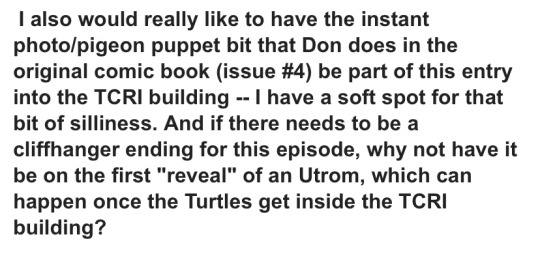
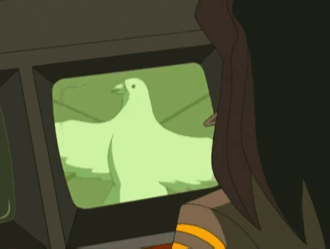
3. One of the turtles flew through a random window (this is separate from the recurring “Leo flies through a window after getting his shell kicked by the Foot” moment seen in various adaptations).

4. The whole Fugitoid stuff is such an absurd premise. Mutant Ninja Teenage Turtles go out to find their Rat master, mistakenly think the brain-like aliens as evil, accidentally stumble into a teleporter and end up trying to protect a random robot guy from evil space dinosaurs.

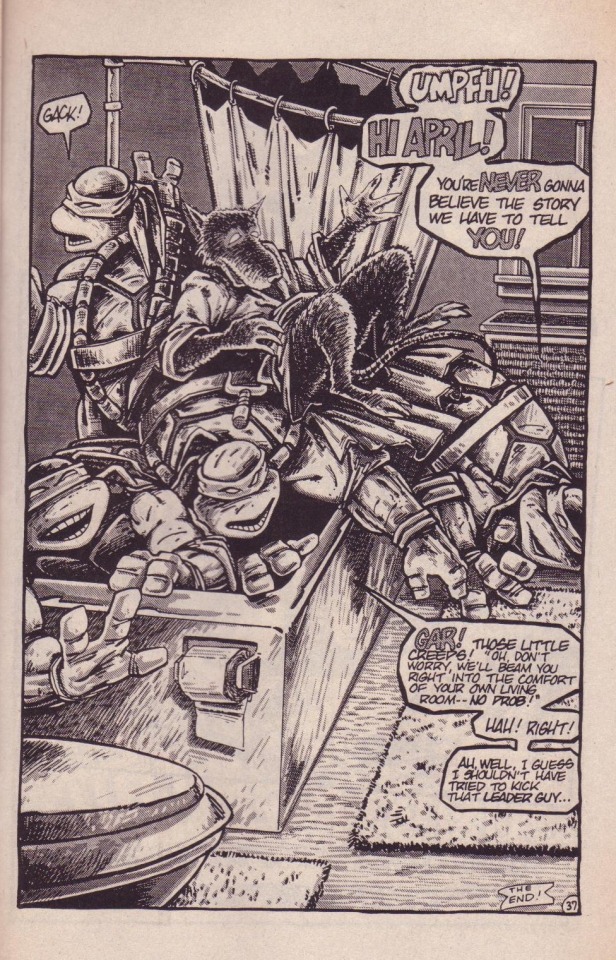
5. Don and Raph bickering
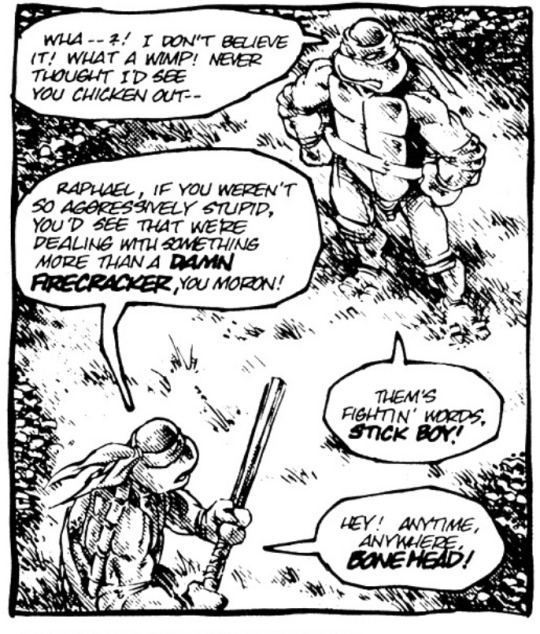
6. Could probably put every page from this issue and there’s something nuts about it. Casey loses his shit that someone stole a Brass Cow from a random store he’d visit as a kid. He does so much so that he fucking hunts down the gang who took it and rescues the cow (including a car chase where Casey leaps onto a moving car to grab onto the cow).
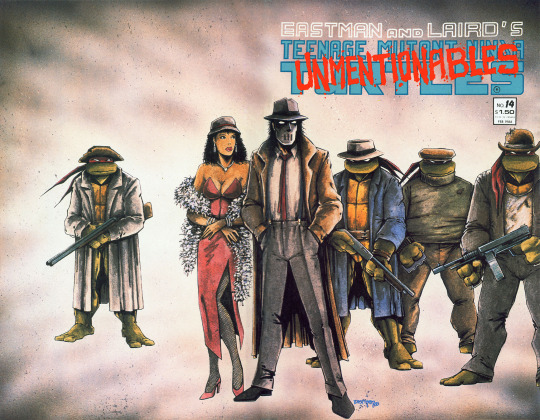


7. Raph being a goober

8. There’s a whole issue where for most of the issue, it’s just unexplained why we’re following a lone Mikey through an ancient Japan. The last 2 pages of the issue however indicate that this isn’t really happening to Mikey, rather he just wrote a story including a self-insert who gets a princess to fall in love with him. This page in general also really exemplifies that Mikey isn’t just some Ninja superhero, he is also a nerdy teenager.
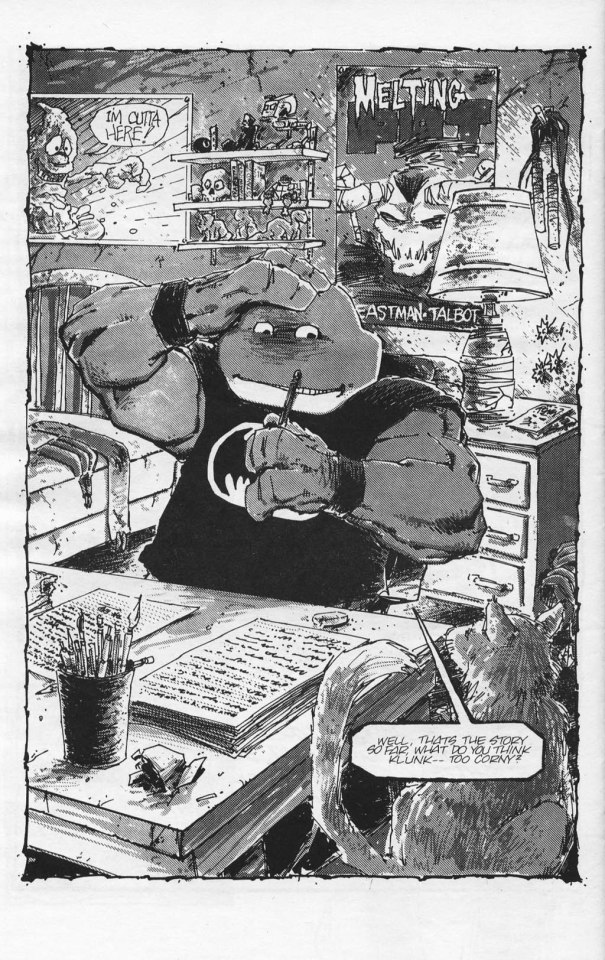
This definitely isn’t every example from the Mirage comics, it’s not even all you could pull from those issues alone. Anyways, my point is that this silliness has been in the franchise since the beginning. Seth Rogan didn’t start making them goofy. Rise didn’t make them goofy. Nickelodeon didn’t make them goofy. The 1987 show didn’t make them goofy. They’ve had a lot of goofiness since the beginning.
Also, this isn’t to say this comic somehow lacks seriousness or that it’s wrong to want/prefer more serious versions of TMNT. After all, if silliness was the only thing that mattered, I think the 87 show would be still running for 30+ seasons. Additionally, I don’t think it’s wrong to make a more serious version of TMNT compared to the original. For example, The Last Ronin tackles a lot of serious concepts and situations and I think that story is quite good. I just think it’s silly how some people exaggerate the Mirage comics as some sort of “realistic/serious Holy Grail” of TMNT.
#tmnt#teenage mutant ninja turtles#tmnt mirage#mirage comics#TMNT comics#tags#le epic#comics#comic books
29 notes
·
View notes
Text




A mercenary and his comrades fight an evil cyborg army in this low-budget effort from Tim Kincaid.
22 notes
·
View notes
Text
Ignorant ranting about Tales of the TMNT, the latest addition to the Mutant Mayhem iteration of Ninja Turtles, an iteration I never got into, and based on just rushing through parts of the series:
What's the point of stunt casting if all they are going to do is make pigeon noises? The payoff does not help.
If you're going to cast Jackie Chan for the film but not the TV series, or a voice double like James Sei, what is the point of now having him speak vermin? Are you trying to say something meaningful about assimilation, or did you just really not want to cast a Chinese actor and thereby erase Chinese representation in the cast or any
I really hate how much talking this series has: it's animation, focus on animation.
I know this is Titmouse, I know I enjoy recent Beavis and Butthead, but why do the humans have to look so much like Beavis designs? I can appreciate leaning into the Motorcity action and aesthetic--but that show at least knew when to have characters shut up for a minute and let the animation do its job.
We really needed to do stupid "pigeon poop" jokes over and over and over again?
I hate when characters do something foolish for the sake of an unfunny gag: that Leo didn't figure out the gentrified restaurant was indeed not Bishop's lair is a dumb gag.
"You're not paranoid--" I am admittedly entering into that joke out of context, but it didn't work for me: either really lean into April being the one to believe every single conspiracy theory, or just don't have her use that line.
I am so tired of the insult "Nerd!" as a punchline, especially to undermine anything heartfelt Leo says at the end of one arc. Just let a moment of sincerity stand, not every last moment has to be destroyed by, "LOL, you love to hear yourself talk, huh?"
The same nerd insult applies when talking about Don, to keep reducing Don to just "nerd" or just "anime nerd." I should be grateful that this is a step up from Jellystone levels of "LOL, body pillows, shut-ins, friendless losers" representations of animation fans (especially as none of this feels like the animators being self-deprecating: instead of "we are nerds, we can joke about ourselves," it's the same tired level of "nerds are losers, geeks are losers, fans are losers, how pathetic they must be").
Stop making Bishop anti-mutant. Please get back to 2003 Bishop in terms of motivation. I appreciated 2003 Bishop's entire attitude pretty much being, "Mutants? I don't care about mutants! I want aliens!" I would have so preferred that characterization: have her be someone fixated on one task, then have her just get annoyed that, instead of aliens, it's mutants. Think Dandadan levels of trying to one-up which is more engaging, the sci-fi or the mystical.
Also, all of this applies to the Earth Protection Force. Maybe additional stories will surprise me, seeing as it will resonate with an audience that an organization looks at native-born people--and still thinks they are "foreign," "other," someone to get rid of.
Acknowledging that Leo was on a shaggy dog hunt does not change that the story is stretching out the plot for the sake of the streaming era.
Bringing back the proto-Rat King intended for the film as a gangster is kind of boring. Granted, TMNT adaptations keep struggling to make the character work or have some core qualities beyond "sway over rats": Mirage was a force of nature but vague enough that you can read him a number of ways; IDW leans too much into godlike power; 1987 was just a guy; 2003 was just an extension of Bishop; 2012 should work with Combs in the role but still takes too long and keeps abusing the Kraang mutagen as a plot device to get whatever result you want for the sake of the story.
5 notes
·
View notes
Text
TMNT 2036
The King and The Hunter
I am currently working on the outline for season 1 of TMNT 2036. I've mentioned all of the characters appearing in the season, except for two. One can be discussed directly, the other must take a more... obscuring view. So without further ado, meet The King and The Hunter.
The King
Splinter finally looked behind himself. At the end of his tail was a knot. But, it was not only his tail. Another rat's tail, the same size, was intertwined with his. His eyes trailed up the tail. A grey body was at the end. It was a rat, a rat as big as him. Its bandages couldn't hide the exposed bloody bones and the rotting green flesh. The head held a glowing, piercing red eye.
Splinter gasped. He instinctively stepped away. His leg shattered. He screamed. A burning carved through his whole body. He collapsed to his good knee.
Between his choking and within the corner of his eye, Splinter saw the body start to stand. From the floor, it grabbed a long, black trench coat and matching wide-brimmed hat, and put them on.
"What's the matter Splinter?" The rat had a hollow, rattling voice. "Don't you recognize your future?" He laughed.

The Hunter
I was hesitant on including Leatherhead at first. He's been done so many different ways. I wasn't sure if I could bring anything new to the table.
However, I soon decided on making a merge between the 1987 and 2012 versions. I wanted this hunter style character to be a devoted ally of the turtles. I also took a smidge of inspiration from Mutant Mayhem and made my Leatherhead female.
Now, I'm about 90% sure on her origin. As stated before in the Bishop post, the X-Triad dumped mutagen on Earth. They did this for at least centuries. However, they eventually discovered that mutagen actually had an effect on the local wildlife, and soon realized this would reflect badly on their society. So, the Obscura Secreti (Mirage) was set up. This organization's goal was to remove all the mutagen and mutants from the planet, as well as cover up the existence of both. (Fun fact: Ch'rell was part of the Obscura Secreti. He considered it a waste of his abilities.) Most mutants were either demutated or killed, however there was one major exception. A mutant alligator possessed the ability to sense and track other mutants. Finding her sense more effective than any of their scanners, the Obscura Secreti used Leatherhead to find mutants, which resulted either the mutant's demutation, or Leatherhead having a nice meal.
Now, the Obscura Secreti would be attacked many times by humanity. Countless human civilizations (such as The Foot Clan) wanted the goo that creates powerful beasts and monsters which in turn could be used to destroy enemies and conquer others. Thus, throughout humanity's history, raid's were carried out on Obscura Secreti facilities in order to take mutagen. One of these raids caused the total destruction of the base, resulting in Leatherhead being let loose in the world.
Over her long life, Leatherhead explored the changing world. She's been across every square inch of the world, both land and sea. She even came across my version of The Hidden City (AKA Y'Lyntias). It's there she learned that she should not eat mutants that can talk.
An incident early into her travels was her encounter with a human hunter, Jack Marlin. Marlin was a fanatical big game hunter, with a focus on unique and real animals. He attempted to hunt Leatherhead.
She ate him.
Fortunately, Marlin tasted really bad, and so she hasn't tried to eat a human since. She did take his clothes and gun. His shotgun, Betsy (the name was etched into it), is Leatherhead's signature weapon. His vest and pants were the first ones she ever wore. She couldn't fit his shirt on (the vest was already being stretched), and before you ask, even as a mutant, she doesn't have breasts. To this day she still wears Marlin's hat, even though it has his name on it.

Eventually, she found herself in New York's sewers. There she found 4 mutant turtles and a mutant rat. She quickly endeared herself to the four young boys with her tales of the world above. The rat was not pleased. Regardless, she became enamored with the family, and began to make an effort to visit regularly between her travels. She saw them grow and their skills improve. Donnie often repaired and even upgraded Betsy. As she visited, their desire to see the surface only grew.
Leatherhead is an aunt/grandma to the turtles. Distinctly a extended relative. Leatherhead is an in-law for Splinter. And Splinter hasn't even been married.
Leatherhead's physical appearance is a mix between 2012 and 1987. Her body is very similar to 2012, though the limbs aren't strangely thin at some places (kinda like the LEGO figure). Her clothing is heavily based on the 1987 version.










(Images of Marlin for further outfit reference)
3 notes
·
View notes
Text
X-Titel-Crossover-Events und Crossover:
Reihung aller Marvel-Crossover, in welchen die X-Men eine größere Rolle spielen von den besten zum schlechtesten:
Age of Apokalypse (1995)
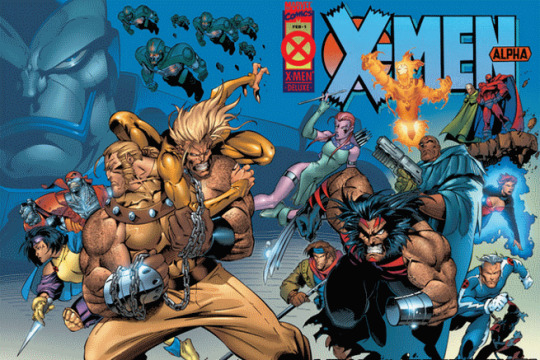
The Asgard-War (1985)
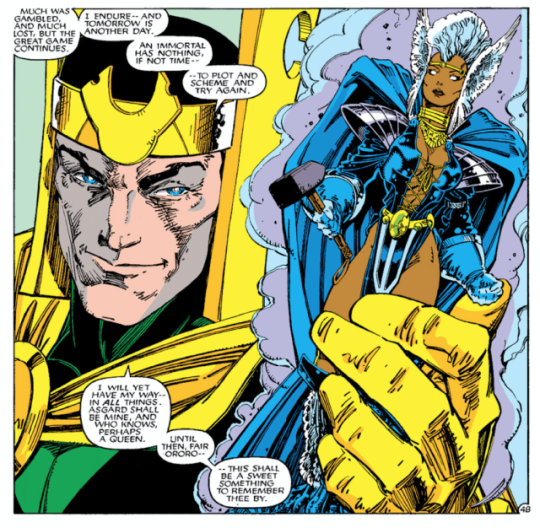
Mutant Massacre (1986-1987)

Inferno (1988-1989)
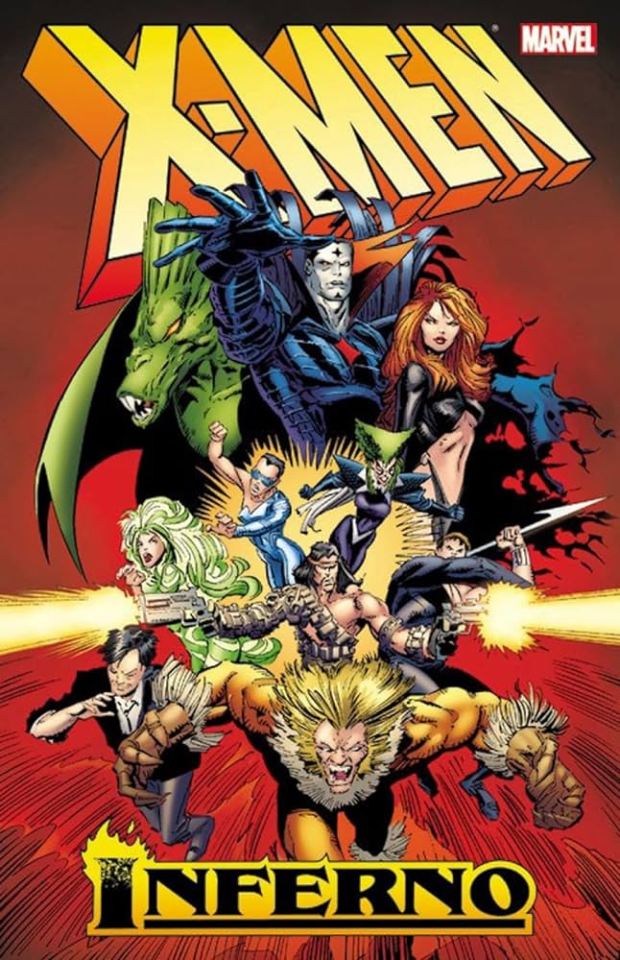
Extinction Agenda (1990-1991)
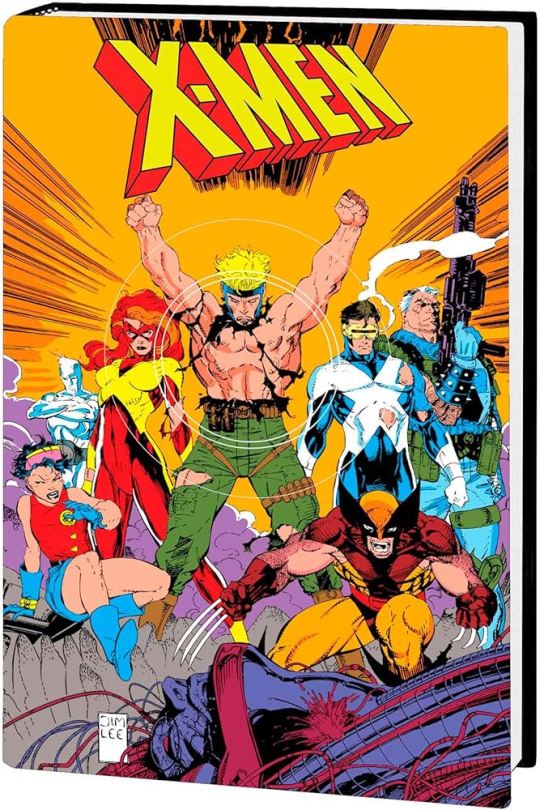
House of M (2005)
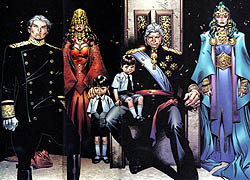
Fatal Attractions (1993)
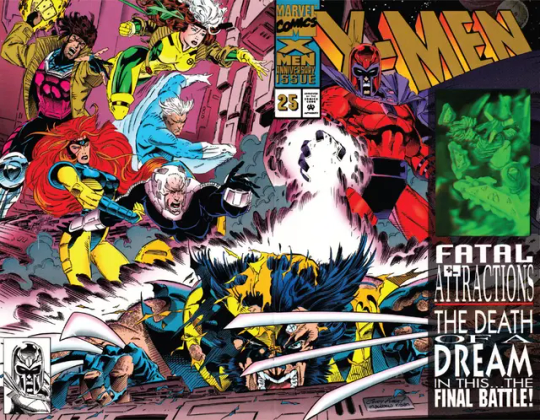
Necrosha (2009-2010)
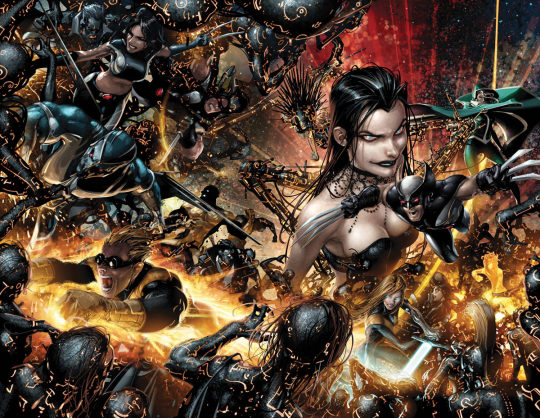
War of the Kings (2009)
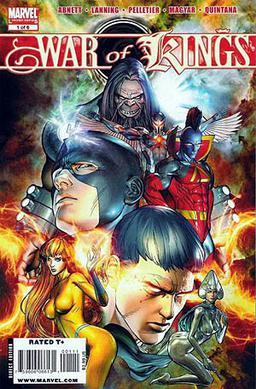
Dream’s End (2001)
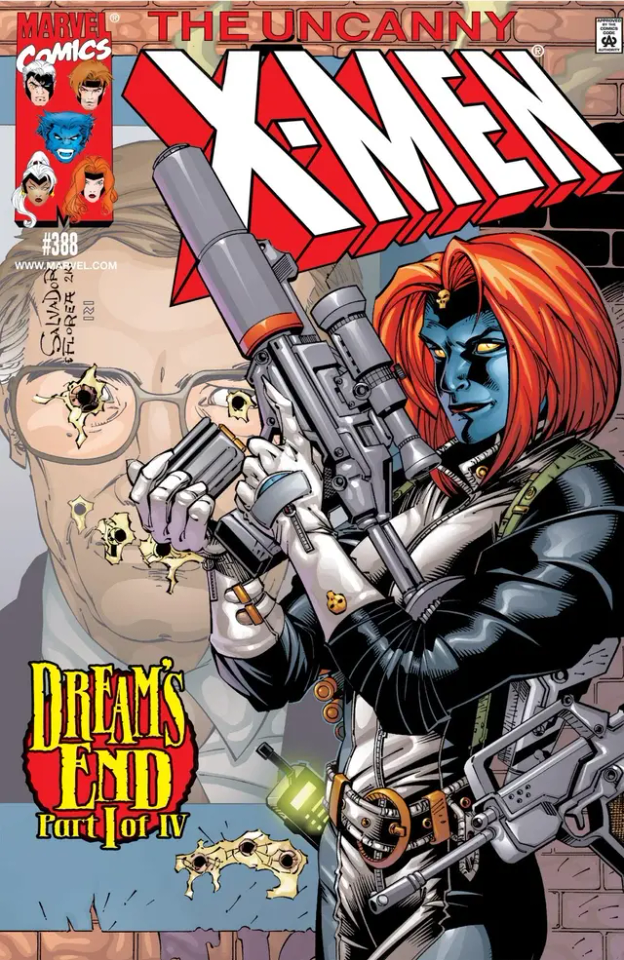
Age of X (2011)
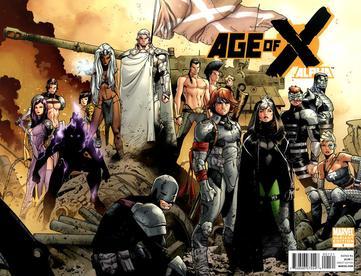
Schism (2011)
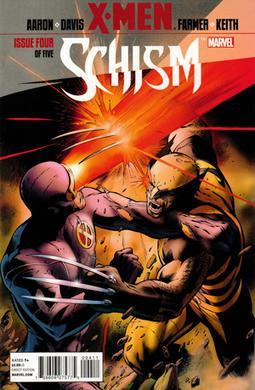
X-Cutioner‘s Song (1992-1993)
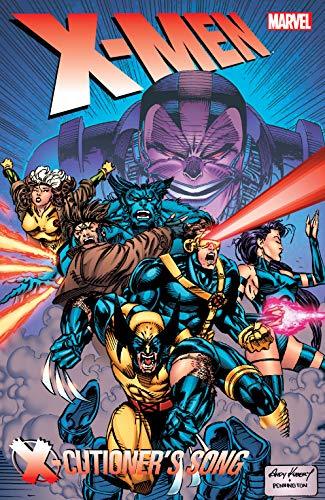
Messiah Complex (2007-2008)
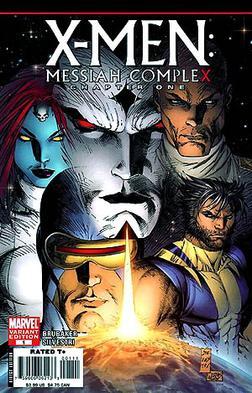
Phalanx Covenant (1994)
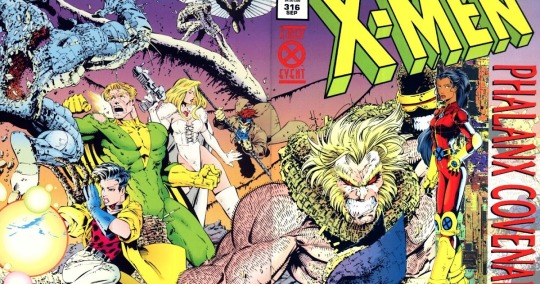
Fall of the Mutants (1988)
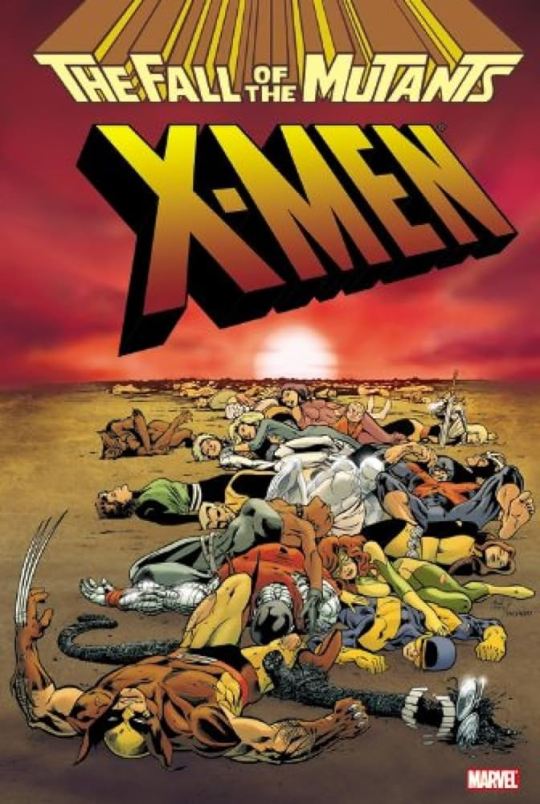
The Muir Island Saga (1991)
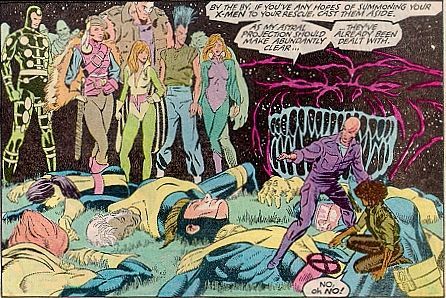
Battle of the Atom (2013)
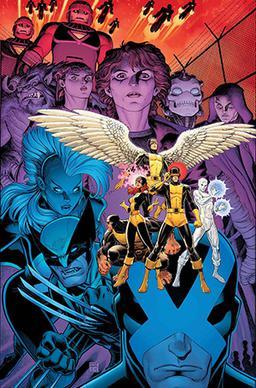
Days of Future Present (1990)
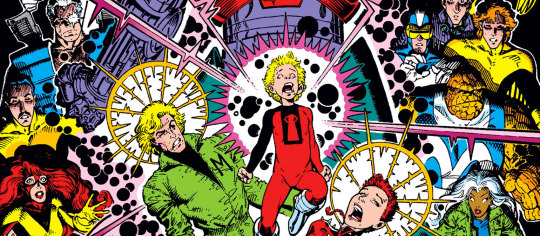
Secret Invasion (2008)
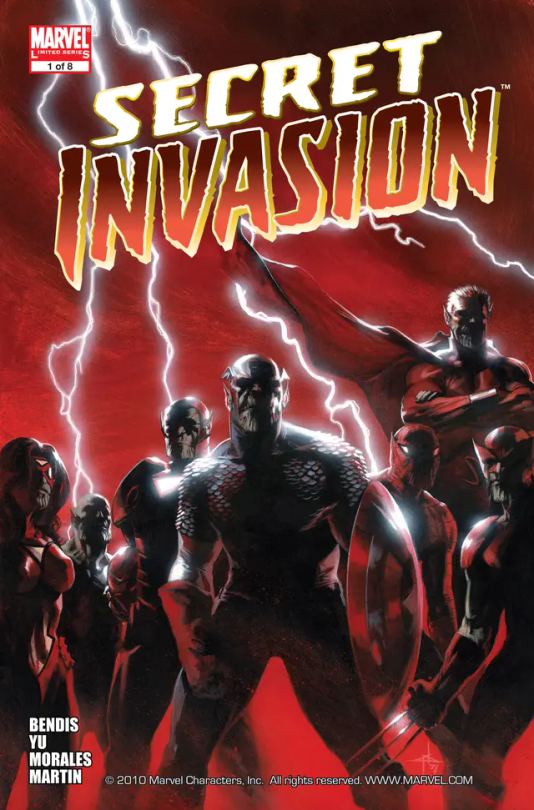
Ages of Apokalypse (2000)
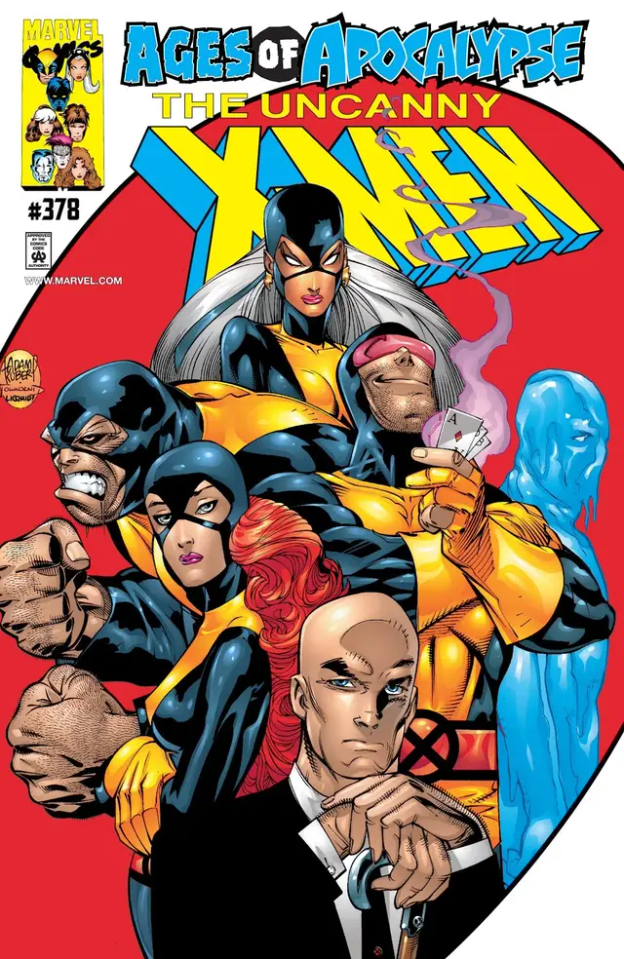
Secret Wars (1984-1985)
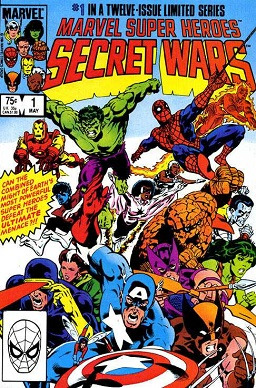
Axis (+ Road to Axis) (2014)
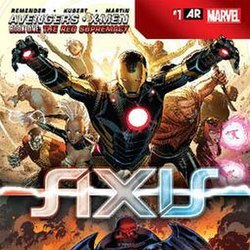
The Trial of Jean Grey (2014)
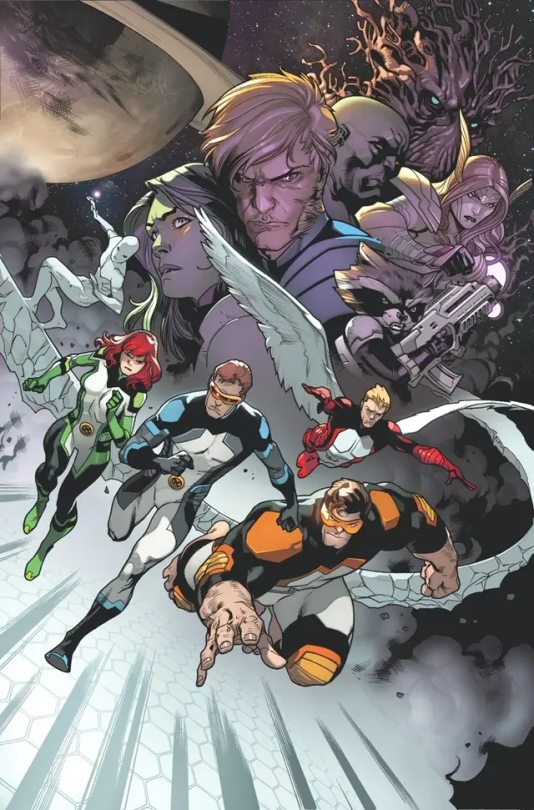
Secret Wars (2015)

Shattershot (1992)
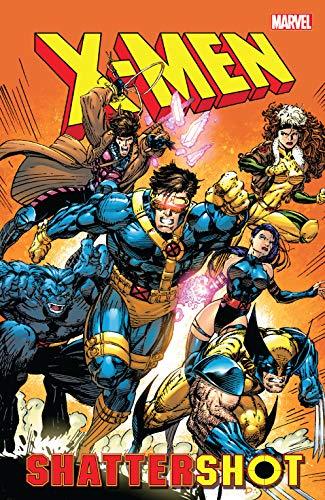
Chaos War (2010)
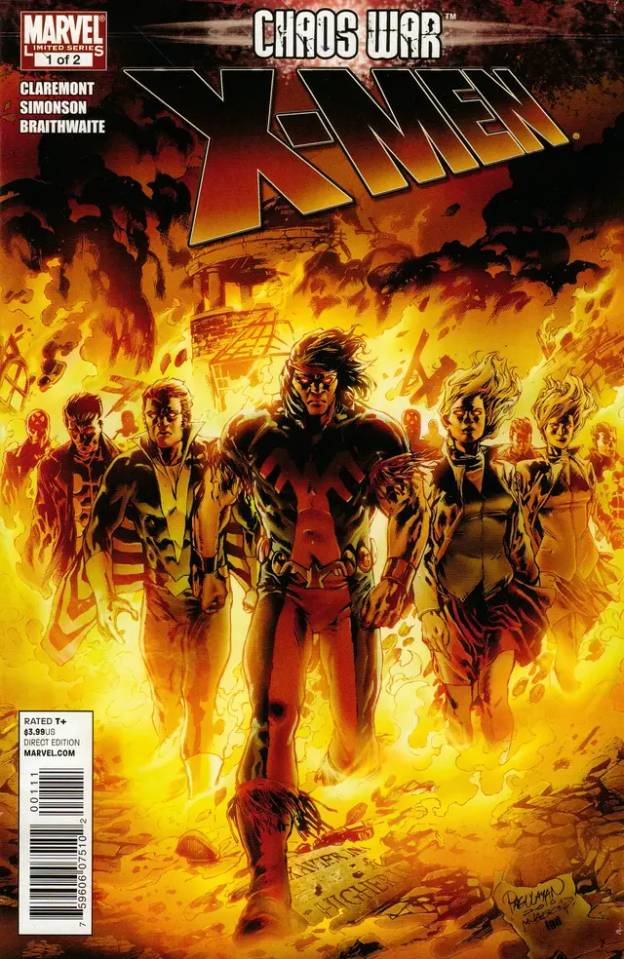
Blood Brothers (1998-1999)
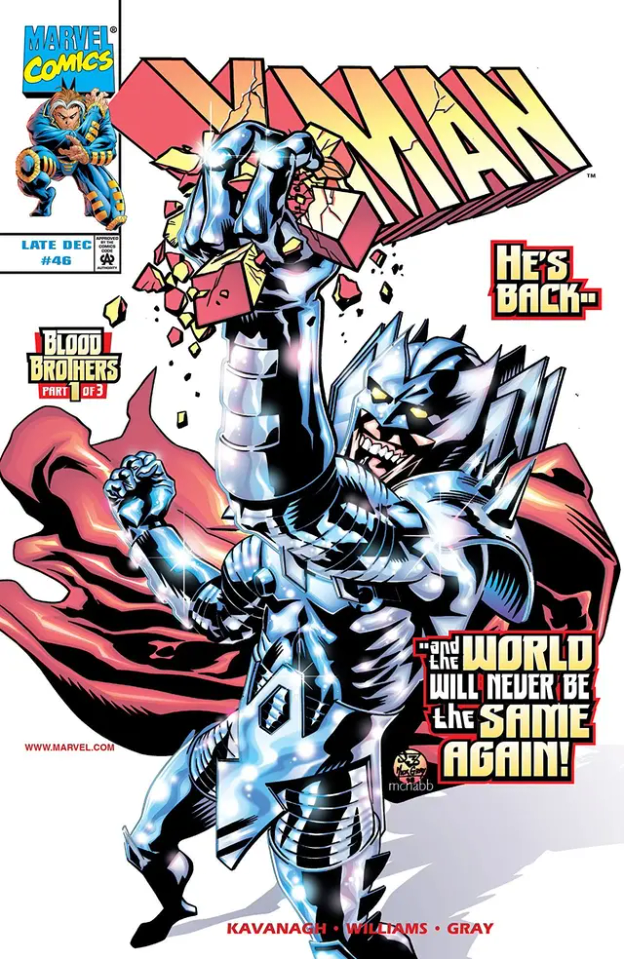
Messiah War (2009)
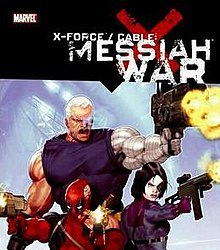
World War Hulk (2007)
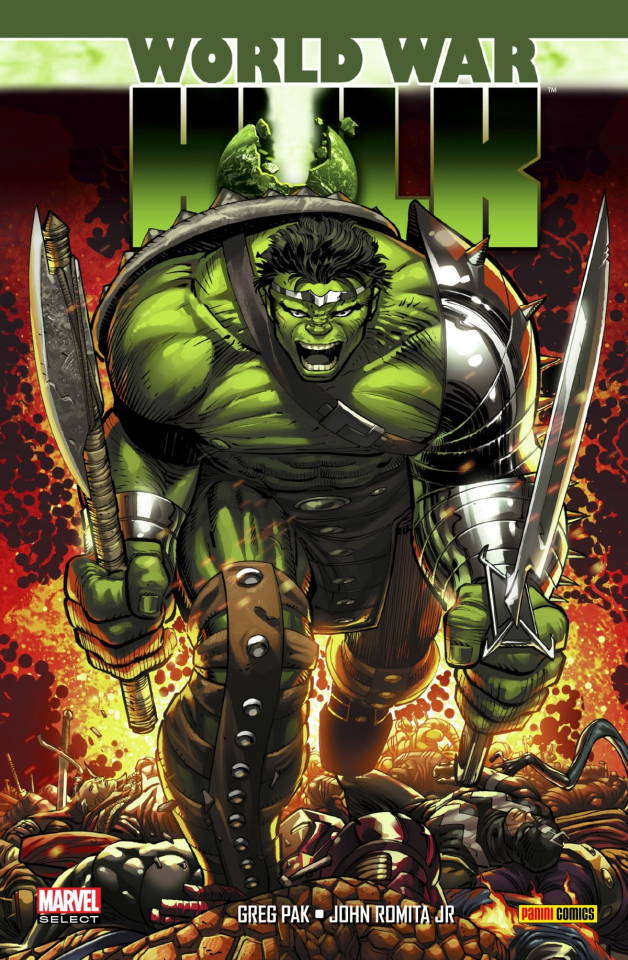
Operation Zero Tolerance (1997)
Secret Empire (2017)
The Twelve (2000)
Secret Wars II (1985-1986)
Collision (2011)
Secret Wars (2005)
The Killing Stroke (1991)
Endangered Species (2007)
Legion Quest (1994-1995)
Dark Reign: The List (2009)
Second Coming (2010)
Onslaught (1996)
Bloodties (1993)
Black Vortex (2015)
X-Termination (2013)
Curse of the Mutants (2010-2011)
Exiled (2012)
Siege (2009-2010)
Hunt for Xavier (1998-1999)
Apokalyse Wars (2016)
Age of X-Man (2019)
Magneto War (1999)
Fear Itself (2011)
Eve of Destruction (2001)
Original Sin (2008-2009)
Reckoning (2010)
Kings of Pain (1991)
Child’s Play (1994)
Maximum Security (2000-2001)
Weapons of Mutant Destruction (2017)
Punishment (2011)
Hunt for Wolverine (2018)
Death of Wolverine (2014)
Contest of Champions (1982)
Contest of Champions II (1999)
King in Black (2020-2021)
Ultimate Power (2006-2008)
Utopia (2009)
Empyre (2020)
I v X (2016-2017)
Dark Web (2022—2023)
Escape from the Negative Zone (2011)
DC VS Marvel/Marvel VS DC (1996)
All Access (1996)
Contest of Chaos (2023)
Ultimate X4 (2005-2006)
Shattering (1999)
Ultimate War (2002-2003)
Wild Kingdom (2005)
The Evolutionary War (1988)
Judgment Day (2022)
A V X (2012)
X of Swords (2020)
Hellfire Gala (2021)
Ultimatum (2008-2009)
2 notes
·
View notes
Text

Mutant Hunt (Tim Kincaid, 1987)
21 notes
·
View notes
Text










Mutant Hunt (1987), tonight's bedtime movie. "The future is a dirty place...When New York is besieged by mutant cyborgs with an insatiable lust for ripping human beings apart, it's dedicated mutant hunter Matt Riker to the speedy rescue! A diabolical scientist, "Z" has injected these mechanical zombies with a sexual narcotic that induces a thirst for killing. All over Manhattan, the robotic Romeos begin loving 'em and leaving 'em...dead."

Totally accurate description.

3 notes
·
View notes
Text

Mutant Hunt (1987)
2 notes
·
View notes